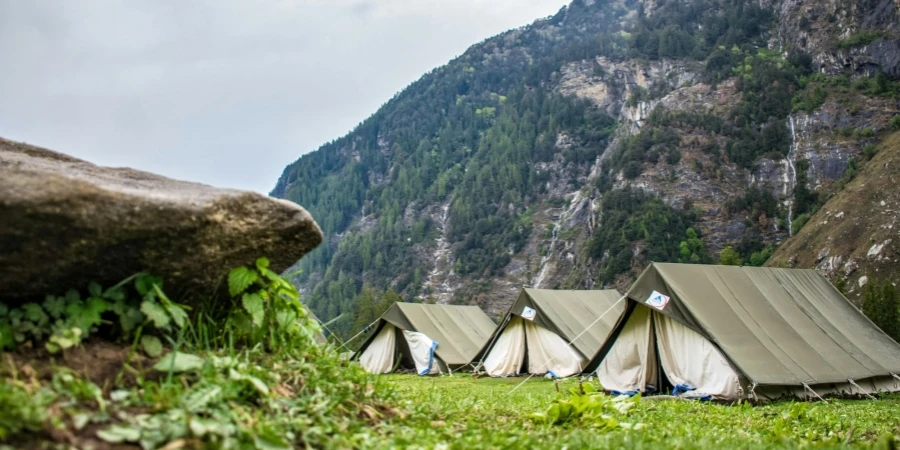Table of Contents
● Introduction
● Camping tent market overview: trends and growth insights
● Key factors to consider when selecting a camping tent
● Top tent models of 2024: features, pros, and cons
● Conclusion
Introduction
Retailers and businesses must carefully select the ideal camping and hiking tents to cater to the changing requirements of enthusiasts effectively in 2025. This detailed manual offers insights into market trends and crucial factors when choosing top tent models that align with customer preferences. By grasping the main features and understanding what customers want most from their camping gear choices, you will be able to offer products that elevate their outdoor experiences significantly.
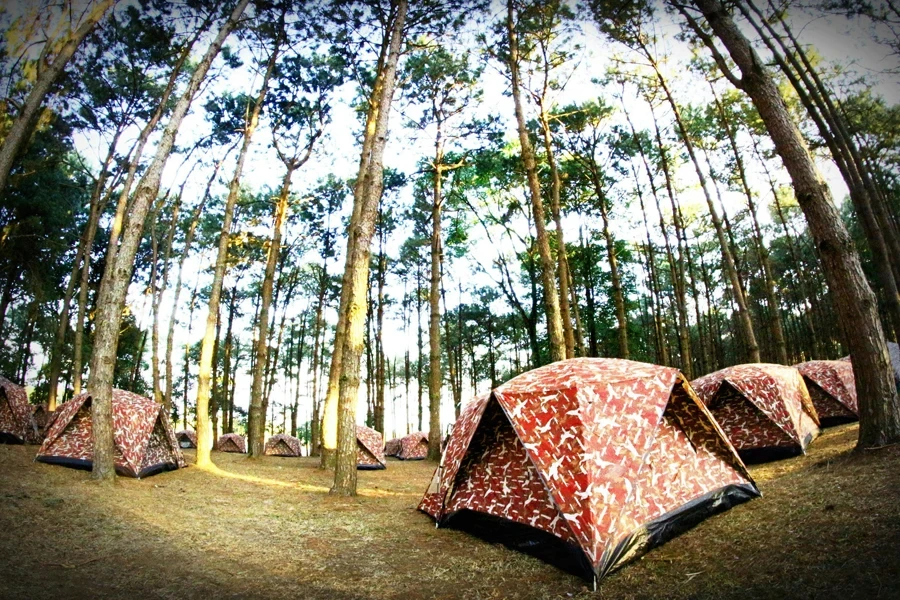
Camping tent market overview: trends and growth insights
The global camping tent market was valued at $5.40 billion in 2023 and is expected to grow at a CAGR of 6.4% through 2030, reaching $8.30 billion, according to Grand View Research. This growth is driven by the rising popularity of outdoor activities such as hiking, trekking, and extreme sports, creating demand for durable, weather-resistant tents. Consumers are seeking tents that can withstand extreme conditions like heavy rain, winds, and snowfall while remaining lightweight and easy to transport. The tunnel tent segment dominated the market in 2023, accounting for over 54% of the revenue due to its stability and spacious design. Innovations like inflatable panels and lighter materials have made tents more user-friendly, especially for group camping.
Smart technology features such as solar panels, USB charging ports, and Wi-Fi integration are becoming popular as consumers seek tents that enhance the camping experience. The dome tent’s reputation for being user-friendly and adaptable is projected to drive rapid growth in popularity, especially among hiking and backpack enthusiasts. North America and Europe remain significant markets in this industry, with Europe accounting for 32.6% of the global revenue in 2023 due to enhanced camping facilities. In the Asia Pacific regions, forecasted future developments stand out with the highest growth rate expected due to rising disposable incomes and a growing enthusiasm for adventure tourism, notably in China, India, and Australia. Social media platforms in these nations are also influencers in portraying camping as an attractive lifestyle option.
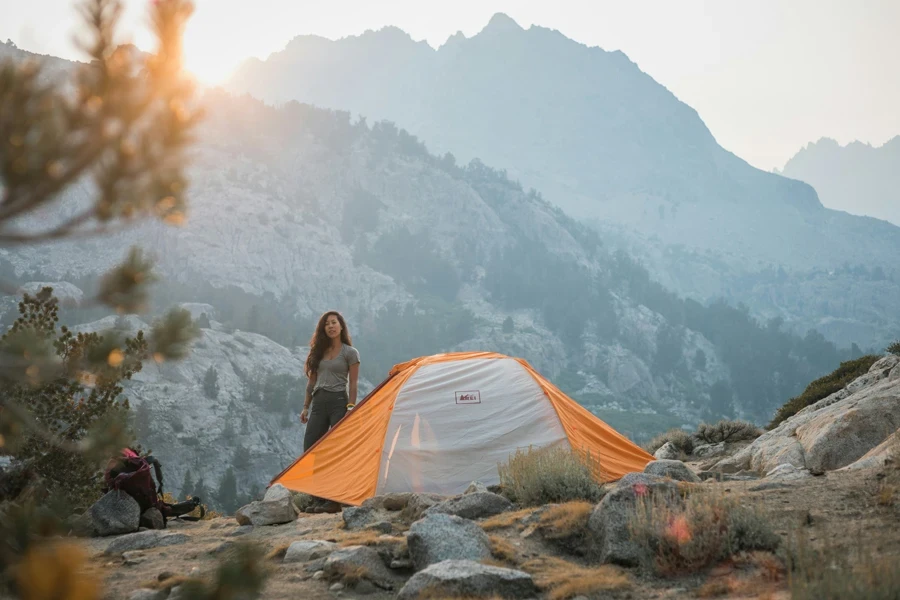
Key factors to consider when selecting a camping tent
Understanding your camping style: car camping vs. backpacking
Your choice of tent heavily depends on whether you are car camping or backpacking. Car camping allows for larger, heavier tents since portability is less of an issue. For example, cabin tents offer spacious interiors and high peak heights, perfect for family or group camping where comfort is prioritized. In contrast, backpacking requires lightweight tents such as geodesic or dome tents, which are easier to carry and set up, often designed to accommodate one or two people with minimal weight. According to Bikat Adventures, backpacking tents are typically lighter, compact, and made with fewer poles to enhance portability.
Weather resistance and durability: choosing for conditions
Choosing the tent according to the weather is key for a great camping adventure. 2-season tents work well in warm areas, while 3-season tents are better for handling rain and wind during spring to fall outings. Another option is 4-season tents built to withstand snow and strong winds, with sturdier materials and poles. Tents made from high-strength materials like nylon with waterproof coatings provide better protection against rain. According to Bikat Adventures, tunnel tents offer superior wind resistance and are suitable for larger groups in harsher environments.
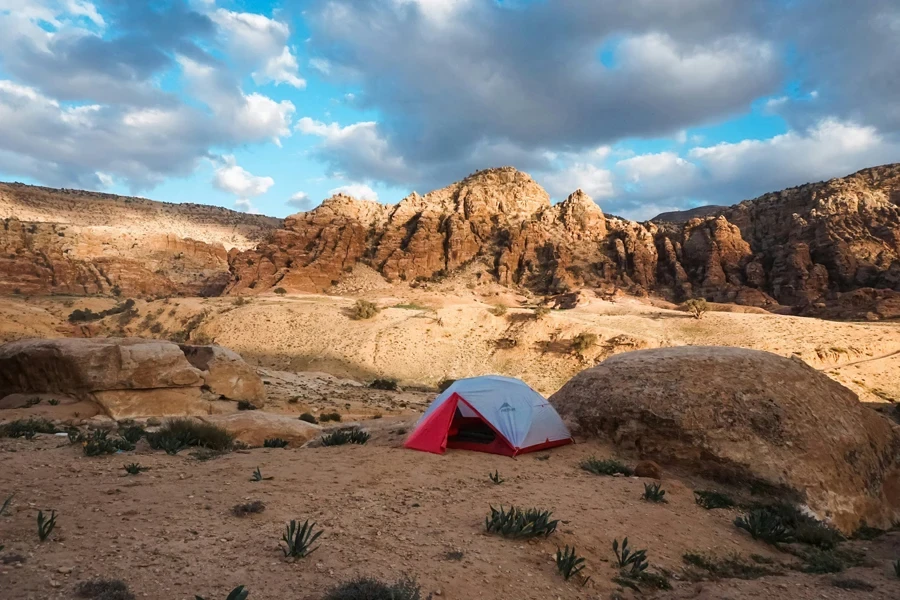
Size, weight, and portability: how to balance comfort and practicality
It is important to consider the size and weight when considering the numper of people during the hike and the distance to be covered. Car campers looking for ample room and headspace can consider larger tent options such as cabin or tunnel styles that provide plenty of space, though they may be heavier and harder to transport. Compact geodesic or dome tents that balance portability and space are ideal for backpackers. These tents are easy to pack and set up after long hikes. Under30Experiences recommends choosing a tent that offers more room than required, especially after a long day of hiking when extra space becomes essential.
Material and construction: features that matter
A tent’s construction and material quality plays a key role in its durability. Aluminum poles are preferred over fiberglass for their lightweight strength, especially in challenging terrains. Double-layer tents with ventilation systems help prevent condensation while maintaining warmth. UV-resistant coatings on fabrics like polyester or nylon offer additional protection from sun damage, extending the tent’s lifespan. According to Bikat Adventures, features like double-stitched seams and waterproof floors enhance the tent’s durability in varied outdoor conditions.
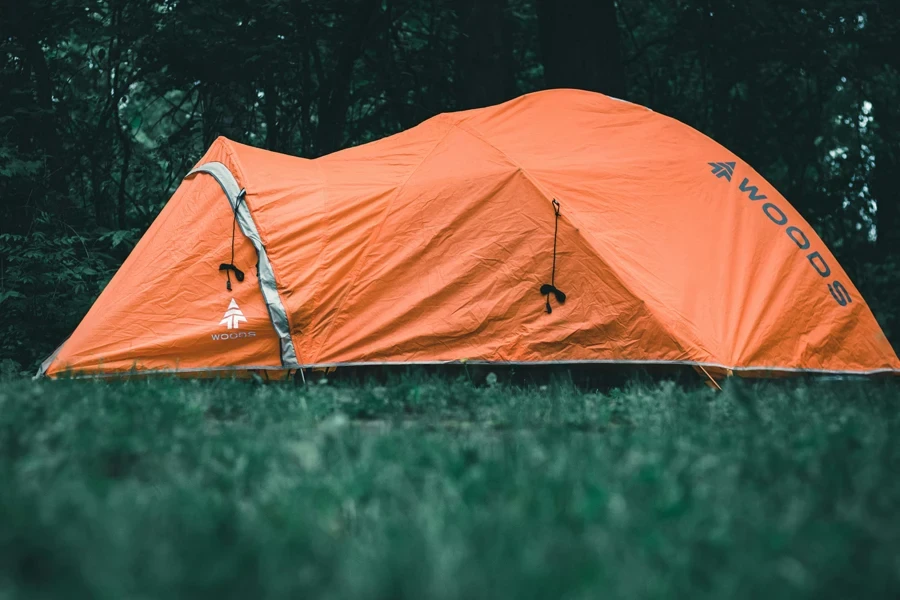
Top tent models of 2025: features, pros, and cons
Best tents for car camping: spacious and comfortable
For car camping, where space and comfort are priorities, cabin tents are among the top choices. These tents offer ample headroom, multiple doors, and large windows, making them ideal for family camping trips and long stays. Cabin tents typically have vertical walls, providing a more livable space for groups, making standing up and moving around easier. Tents such as tunnel models, known for their stability in high winds, are also favored for car camping due to their roominess and robust design. According to Grand View Research, tunnel tents accounted for 54% of the market share in 2023, thanks to their ability to withstand harsh weather conditions and accommodate larger groups.
Best lightweight tents for hikers: minimal weight, maximum protection
Backpackers and hikers prioritize lightweight, compact designs that can be easily carried over long distances. Geodesic and dome tents are highly popular for balancing weight and protection. Geodesic tents, with their multiple poles intersecting to create a stable structure, are perfect for challenging terrains and extreme weather conditions. Dome tents, conversely, are easier to set up and offer excellent wind resistance while remaining lightweight, making them ideal for solo or duo backpackers. According to Grand View Research, these tents have gained significant traction, with the dome segment expected to grow rapidly due to its versatility.
Innovative tent features: smart technology and custom designs
As camping technology evolves, the latest models integrate smart features like solar-powered panels, USB charging ports, and even built-in Wi-Fi. These innovations cater to modern campers who seek connectivity and convenience in remote locations. Some brands offer custom-designed tents with eco-friendly materials, targeting consumers who prioritize sustainability. According to Grand View Research, integrating smart technology is a major trend in the camping tent market, offering both functionality and enhanced user experience for tech-savvy outdoor enthusiasts.
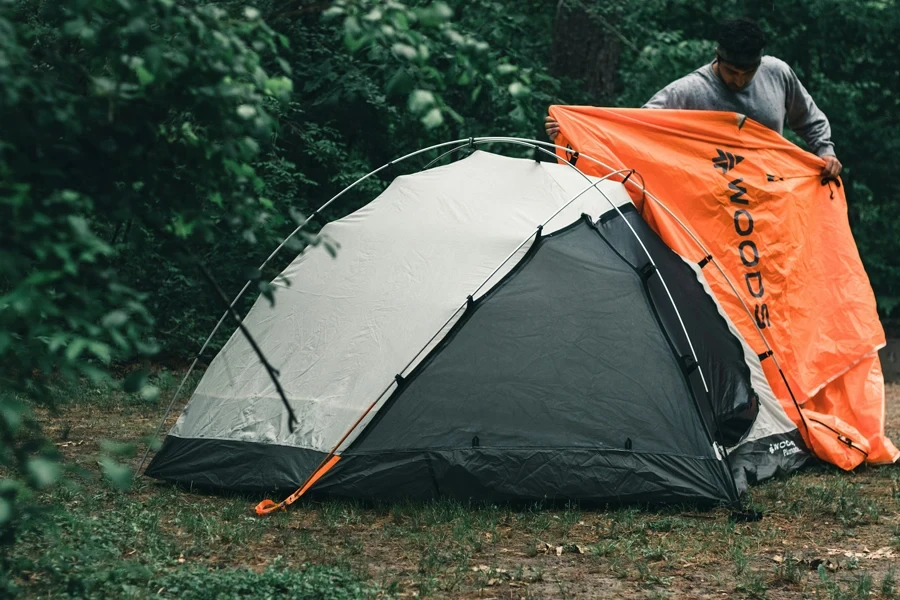
Conclusion
When selecting the best camping and hiking tents, it’s essential to consider your camping style, such as car camping or backpacking, as it directly impacts tent size, weight, and features. Prioritize weather resistance and durability based on your conditions, choosing materials like high-strength nylon and waterproof coatings for protection. Additionally, consider product features like portability for long hikes, ease of setup, and smart technology integrations to enhance your camping experience. You can ensure a comfortable and reliable outdoor adventure by aligning these factors with your specific needs.
